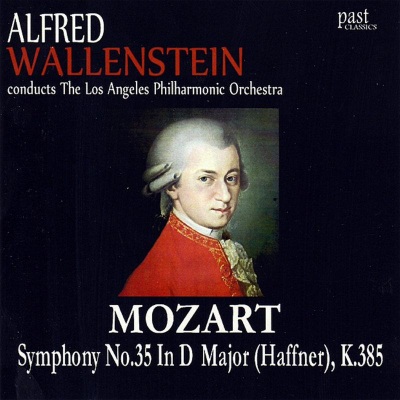
Mozart: Symphony No. 35 in D Major (Haffner), K.385
By the end of the 20th Century the Los Angeles Philharmonic had established itself as one of the world's leading orchestras and a leading voice for 20th Century music. The Los Angeles Philharmonic was founded in 1919. It was established by Los Angeles multi-millionaire and avid amateur musician William Andrews Clark, Jr. Walter Henry Rothwell was its first music director. Rehearsals began on October 13 and the first concert was October 24 at Trinity Auditorium in downtown Los Angeles. The next year it moved into The Temple, a church built in 1907 and renamed Philharmonic Auditorium. Despite the name change, hall remained a place of worship and the orchestra had to plan its activities around that of the church. Following Rothwell, the orchestra's music directors were Georg Schnéevoigt (1927-1929), Artur Rodzinski (1929-1933), Otto Klemperer (1933-1939), Alfred Wallenstein (1943-1956), and Eduard van Beinum (1956-1959). In 1945 Leopold Stokowski had founded the Hollywood Bowl Symphony for the summer concerts at the Hollywood Bowl, a striking art-deco outdoor concert shell in a lovely natural amphitheater. That orchestra disbanded two years later, and the Los Angeles Philharmonic replaced them as the regular orchestra for this series. In 1962 Zubin Mehta began his long and productive tenure as music director, which lasted until 1978. He burnished the sound of the orchestra and initiated a successful series of recordings. He was succeeded by Carlo Maria Giulini (1978-1984), who brought his strong identification with the Classical repertory to the orchestra in his own recordings with the orchestra. André Previn had a successful tenure (1985-1989). In 1964 the LAPO moved into a new home, the Dorothy Chandler Music Pavilion, also in downtown LA. The hall is shared with the Civil Light Opera Association and other concert and theater companies, a situation that has grown uncomfortable and limited for the Philharmonic. In 1990, the orchestra followed the lead of the Boston Pops by making an organizational distinction between its winter concerts and his summer series by founding the Hollywood Bowl Symphony Orchestra from the LA Philharmonic. John Mauceri was appointed its music director. In concerts and on recordings the HBSO stresses its identification with the film capitol in its popular concerts. Its recording of complete overtures of Rodgers and Hammerstein Broadway plays and its recording of their musical The King and I using the lush orchestrations written for the classic 1955 film both headed the crossover charts. In 1991 Mauceri took the HBSO on its first tour, to Japan, returning in 1991. The LAPO gives an annual 30-week winter season; the HBPO an 11-week summer Pops schedule. The LAPO's music director between 1992 and 2009 as Esa-Pekka Salonen, the exciting young Finnish conductor and composer whose programming was built around the great established classics of the 20th Century, new music, and a strong representation of the standard repertoire. In November, 1999 construction began on a new permanent home for the orchestra, Walt Disney Hall, a striking design with a titanium and brushed stainless steel exterior. Gustavo Dudamel assumed leaderhip of the orchestra in 2009.
